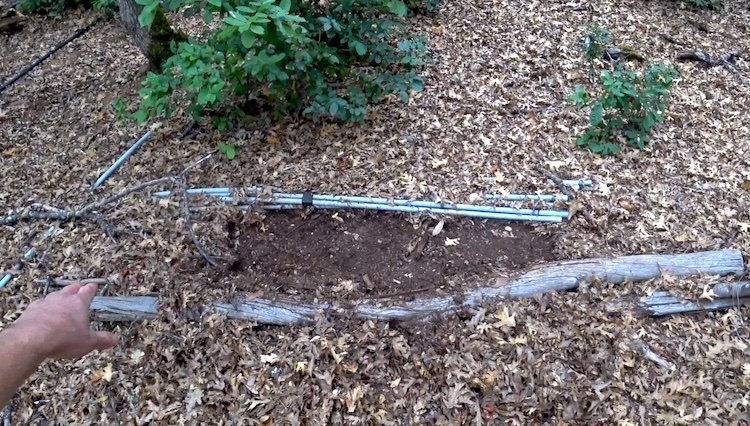I use quite a bit of leaf duff mulch collected from the forest. While I also use other things, there is nothing quite like it. I posted this short video today on a simple system for concentrating and encouraging it’s formation for harvest, but here is the low down.
Video URL: https://youtu.be/jrk6rcplVPk
So, why leaf duff. I use leaf duff mostly on seed beds. Leaf duff is not just shredded leaves or any organic matter. One trait it has is that small flat pieces are efficient at surface coverage. Why cover the surface? To keep water in and protect the soil. Almost any mulch can protect the soil for losing water. It also protects the soil for the hammering effect of rain and watering, which can pulverize it and destroy it’s structure. Most agriculture systems use cultivation for a reason, it breaks up soil crusting. compacted soil wicks away moisture faster by capillary action. Loose soil can act like a mulch, greatly slowing water loss. Crusting also inhibits the penetration of water into the soil, so we not only have rapid loss, but less infiltration.
Lets say I plant a bed of carrots. The seeds are very small and they take a long time to come up. If I don’t cover them at all, as soon as I water, the soil begins crusting over. Each time I water, it will become worse. Once crusted the water I do add will not penetrate the tight soil surface as easily and what does sift through will leave faster. Adding amost anything from coffee grounds to saw dust, to compost will help alleviate this problem. Leaf duff, sifted through a half inch screen, if applied carefully and sparingly, efficiently protects the soil, but will still allow the seeds to come though. If I don’t cover the bed with anything, my carrots are going to be harded to keep moist enough for good germination. Since the take a long time to come up, and are planted shallowly, I can’t intervene by breaking up that crust. I plant carrots on an either 2 inch or 3 inch grid pattern, so even when they do come up, cultivation is very difficult. I usually mulch lightly to get them up, and when they have all emerged and grown a little, I sift more fine mulch over the bed.
I usually sift duff through a 1/2 inch screen Sifting not only gets out the big stuff, which I still use as mulch on larger plants, but it also breaks up the material for easy and even application.
Leaf duff also adds microbes to the soil. Forest duff is teeming with organisms established for ages in the forest ecosystem to make use of and recycle organic matter. People go out and collect these organisms from forest duff and grow them in a starch solution to add to garden soil.
so I get soil protection, mulch, add a few nutrients, add organic matter and add beneficial microbes without having to buy anything. Go through the alternatives that perform a similar function and the properties they possess to compare. Forest duff is good stuff.
The system is simple. Going out and collected a lot of this stuff over the years, you notice that it is deeper where divets are created in the landscape. Leaves move downhill quite a bit and accumulate in low spots or behind dams that create hollows. So I set up some logs in strategic places accross the landscape when out doing forestry work. I think the steeper the hillside, the more, or faster, leaves will collect. It takes a few years to gather enough and break down adequately, but it’s a simple intervention and you can revisit them over and over once set up. I’ll definitely implementing this idea a lot at my next place if the environment is suitable.
Leaf dams are not rocket science. Just lay something across slope under a tree that makes a lot of good leaves and wait about 3 years. I will also be trying out shallow trenches and laying the soil into a berm downhill. These hollow areas in the landscape are also good places to lay down brush for cleaning up debris while creating some small animal habitat.
Another idea I had was to try innoculating Blewit mushrooms into these spots. They really like growing in deep leaf mulch. I’ve piled up leaves in spots and had them just show up. Whether you could still harvest the duff and keep the mushrooms I don’t know, but I suspect you could. Either way, it could be a great system for growing blewits too.






